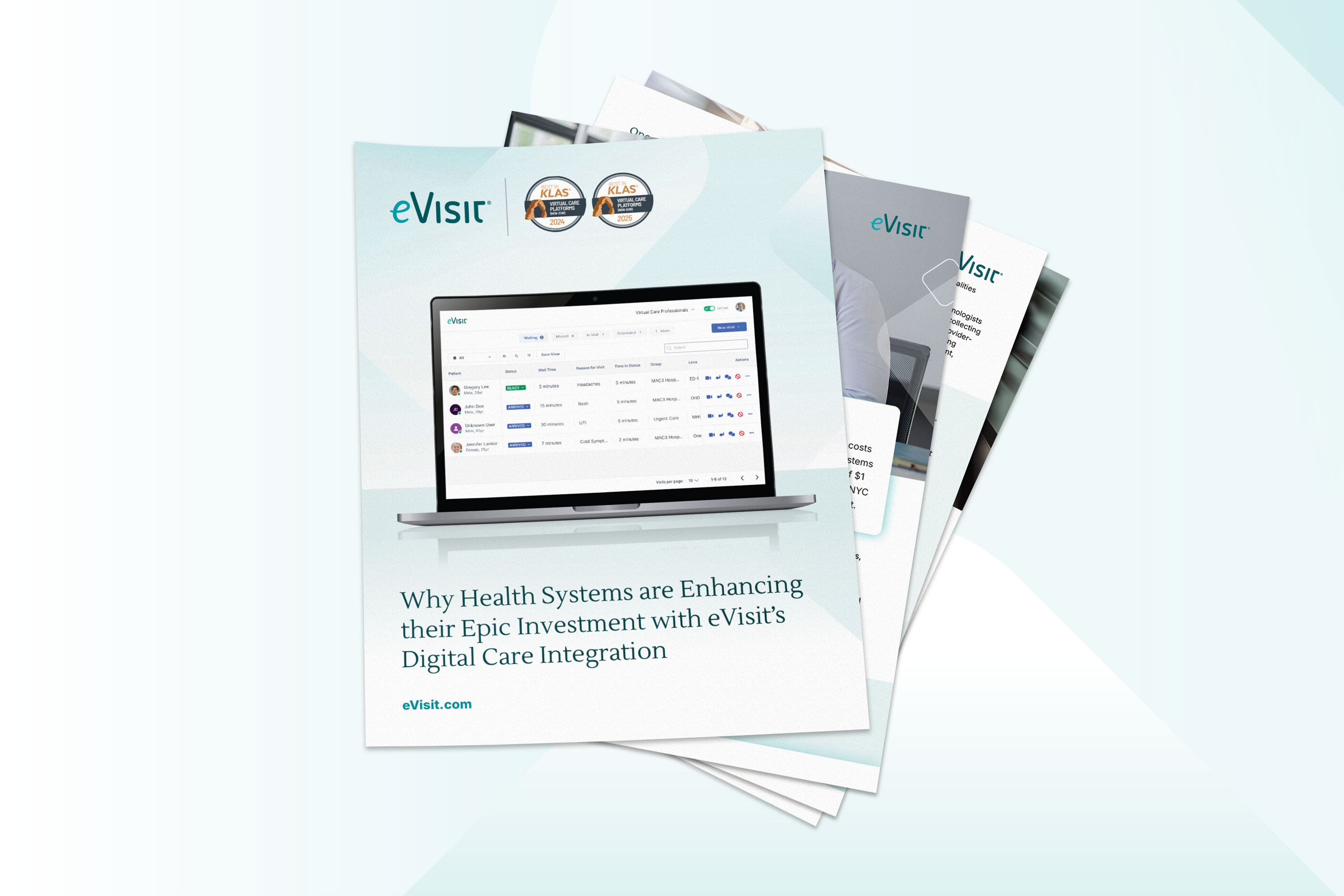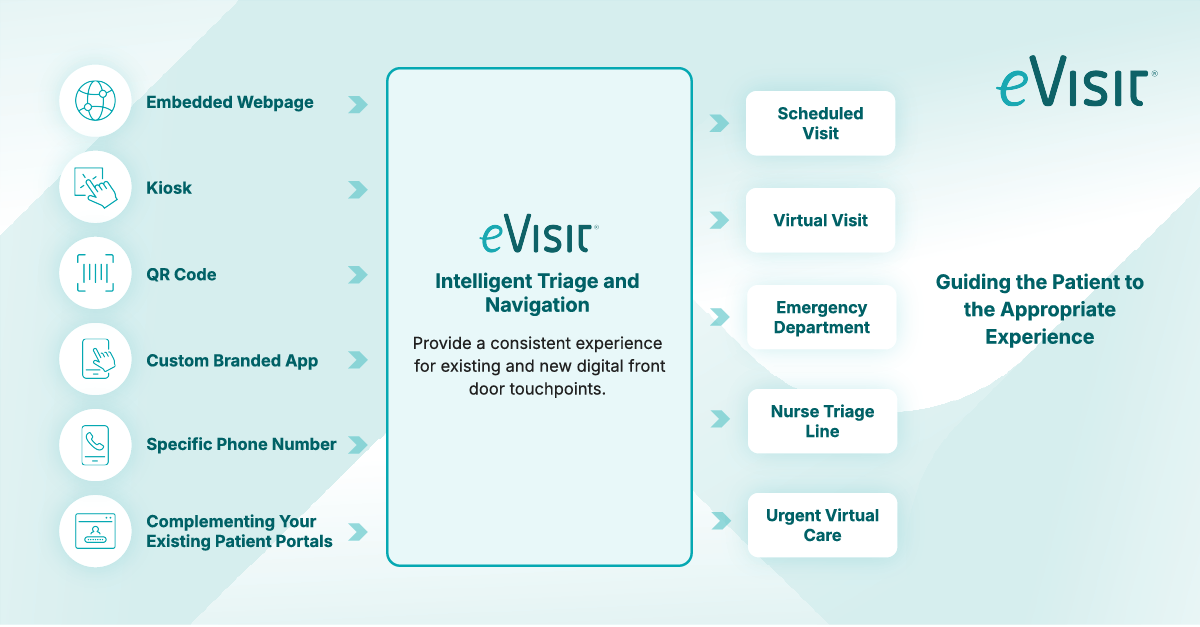
Why Health Systems are Enhancing their Epic Investment with eVisit’s Digital Care Integration

In this white paper, you will discover:
- Why many health systems find themselves trapped in a reactive paradigm
- How to establish a true digital care program
- How eVisit is driving transformation at leading health systems with significant Epic investments




